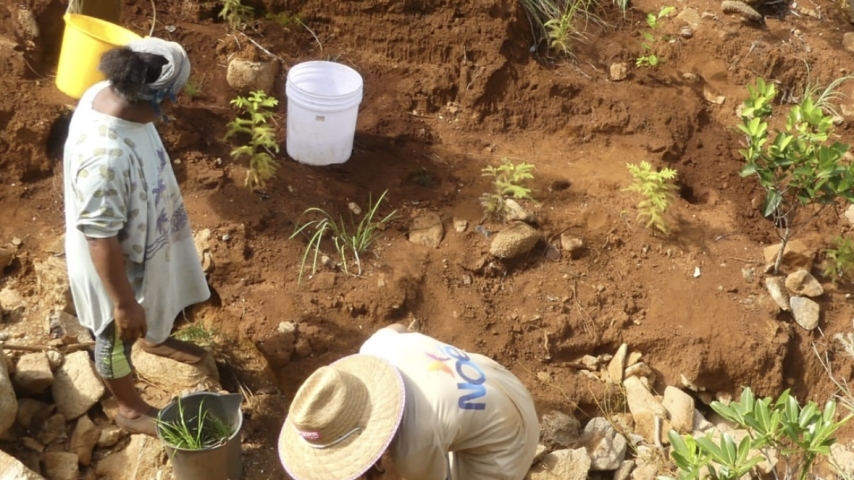
Photo credits: Fondation Prince Albert II de Monaco
New Caledonia, a French archipelago in the South Pacific, is home to one of the world’s most extraordinary reservoirs of biodiversity. An astonishing 74 percent of its plant species are unique to the islands, making its ecosystems as fragile as they are remarkable. Yet, for decades, these environments have been under pressure, particularly the coastal forests where native palms and conifers once flourished in abundance. Until recently, formal conservation programs to protect these species were largely absent.
That gap is now being addressed through a project supported by the Fondation Prince Albert II de Monaco in collaboration with Noé Biodiversité, a French non-governmental organization dedicated to species and ecosystem preservation. The initiative seeks to restore coastal forests, safeguard emblematic plant families, and reverse the long erosion of New Caledonia’s natural heritage.
The program is multifaceted: it strengthens nursery production to ensure a steady supply of native seedlings, fosters local partnerships to anchor conservation efforts in community life, and enhances in-situ protection for fragile habitats. This integrated approach not only supports ecological recovery but also builds community resilience, underscoring the fact that conservation is not solely about protecting plants but also about sustaining the people who live among them.
In a global era of accelerating biodiversity loss, New Caledonia’s coastal forests serve as both a warning and a beacon. The degradation of ecosystems rich in endemic species is a reminder of what is at stake if action is delayed. At the same time, the collaborative project led by Noé Biodiversité and supported by the Fondation Prince Albert II de Monaco demonstrates how targeted interventions, grounded in science and bolstered by local engagement, can yield meaningful results.
What emerges in New Caledonia is not just a story of ecological repair but also of renewed responsibility. By restoring its forests, the archipelago contributes to the global effort to meet United Nations Sustainable Development Goal 15 - the protection and restoration of life on land. And in doing so, it offers a powerful example of conservation in action, with lessons that extend far beyond its shores.

